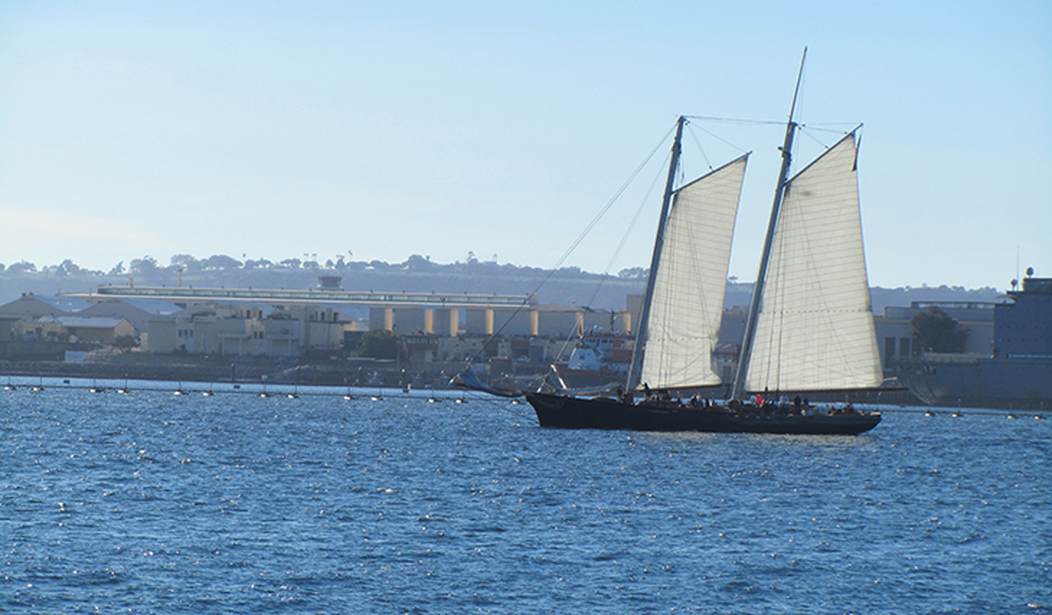This looks a lot like borrowing from pre-twentieth century technology, but it turns out it’s a little more than that, and wonder of wonders, it may actually be a “green” idea that has some value. The new tech? An upgraded sail. Sort of. And, as always, there’s a catch.
You may have seen kitesurfers in action, harnessing the power of the wind to pull them over the sea. Now imagine the same concept applied to a 1,000-square-meter kite, flying 300 meters above the water – only instead of towing a surfer across the waves, it’s helping to propel a colossal cargo ship across the ocean.
That’s the basic idea behind the Seawing, a technology being developed by French company Airseas, which it says could help cargo ships reduce their fuel consumption, and cut their carbon emissions by an average of 20%.
Forget the carbon emissions for a moment, and think about shipping costs. If this can reduce carbon emissions by 20 percent, then it would presumably reduce shipping costs by a similar amount, and, once you hit the break-even point on the install, end up with substantially cheaper international shipping.
Powered predominantly by fossil fuels, the shipping industry accounts for around 3% of global greenhouse gas emissions, according to the International Maritime Organization – which is why there’s an urgent need for change, says Airseas co-founder and CEO Vincent Bernatets.
Alternative fuels, such as green ammonia, are in development, but they are expensive and Bernatets argues that it will be decades before the infrastructure is in place to deploy them at scale. “In the meantime, what can we do?” he asks. “That’s where using wind is absolutely paramount.”
While boats have been powered by wind for millennia, the Seawing uses cutting-edge technology to make it fit for the 21st century. The kite is a parafoil, much like a kitesurfer’s, and is launched via a foldable mast, which is also used to retrieve the kite and stow it away when it’s not needed.
Its flight is controlled by autopilot software that operates from a box beneath the kite, which is in turn attached to the ship by a 700-meter-long cable that provides power and sends data to and from the vessel.
For once, this is no humbug. You can color me surprised.
Much will depend, of course, on what the setup costs of such a unit will be and when the break-even point is on the installation, which will be determined by how much the reduction in fuel costs will actually be. But here’s the thing: If this works as the developers are claiming it will, no government intervention or regulation will be necessary to see to its use. Market forces will take care of it; if it can save shipping companies fuel costs enough to cover the installation and setup and still realize savings, then it will be used. The shipping companies will adopt it not to reduce carbon emissions but to increase profits and (hopefully) pass some of the savings on to consumers. That’s how these things should work. And this is where the Seawing people go off the rails.
There is a common fallacy behind much “green” technology. Electric cars, for example: if they were economically feasible, the government wouldn’t have to subsidize them. Ditto for wind turbines and solar panels. And that’s where Mr. Bernatets loses the narrative:
Bernatets agrees that rising fuel prices provide an incentive for ship owners to install the Seawing. Although he wouldn’t reveal the cost of installing the technology, he says it will generally take two to five years for a customer to make back the cost in fuel savings. He adds that savings will become more pronounced as ships transition to green fuels, which are more expensive than fossil fuels and take up more space, because they are less energy dense.
In other words: “We are going to introduce a new technology with the capacity to significantly reduce fuel costs, then negate that gain by forcing shipping companies to use less energy-dense, less efficient, more expensive fuels.”
That is always the rock on which green technology founders.














Join the conversation as a VIP Member